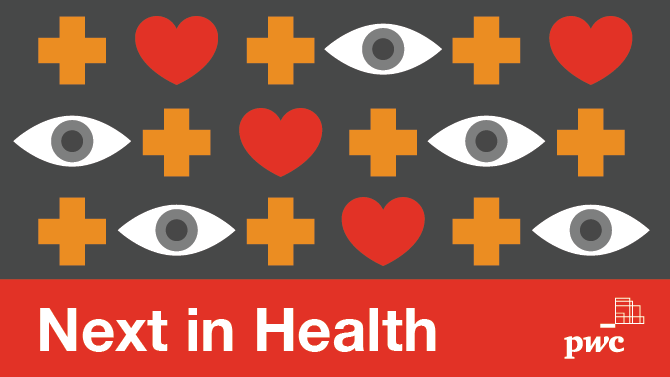- Timeless Autonomy
- Posts
- OT Potential Blog and VBC Resources
OT Potential Blog and VBC Resources
Plus: Intro to Medical Cost Trend

If you are looking for templates and ideas to create Linked In or Twitter posts, draft newsletters, blogs, essays, and more, I love Typeshare.
Here’s one Linked In post template preview. When you choose a template, the editor opens up with the full outline. You can publish right to your social media accounts. 👇️
And of course, they have AI built in to help with brainstorming and outlining, too. It’s free to start if you want to give it a shot! I’m also a big fan of its founders, Dickie Bush and Nicholas Cole, and took their course “Ship 30 for 30” last year. (*I’m a user and affiliate of Typeshare.*)
Guest Blog on OT Potential: What is Value-Based Care? Glossary, Examples, and More
I have had the great pleasure of getting to know Sarah Lyon, OTR/L over the past two months. Sometimes we meet someone we know we will be friends with for the long haul, and this was one of those time.
Sarah generously invited me to be on her podcast, where she provides education and up-to-date news for occupational therapy professionals. Sarah also has a blog and an active, thriving community, where OTs may join and may earn CEUs through discussion and quizzes on the week’s podcast episode and related journal articles. It’s brilliant, and so his she.
Who doesn’t want to learn via podcast?
Here’s Sarah explaining OT Potential in this YouTube short:
You can listen on podcast platforms on the go! Here’s the landing page. If you are an OT, it was approved for 1.5 CEUs by the American Occupational Therapy Association (AOTA), and you can trial the membership for five days.
🤩 If anyone from the American Physical Therapy Association (APTA) sees this and wants to talk about a course for physical therapists and physical therapist assistants, I’d love to create something like this for our profession. 🤩
I wrote a blog to go along with the podcast, and it is chock full of resources about value-based care useful for any healthcare professional or anyone interested in health policy. Here’s a snip, with a link to the blog.
Note that because there are tables with clickable links to other resources, it is a bit easier to digest on a full screen rather than a phone.
Medical Cost Trend, Part I
This topic isn’t as dry as it sounds. Stick with me here. 🙏
Medical cost trend is great water cooler talk, no? 😀 Want to try setting a new trend?
But seriously, I think it’s cool to be the healthcare professional who can talk about non-clinical topics the leadership team is almost certainly talking about.
They are making business and employment decisions based on things like how current medical cost trend (and how they intersect with policy, trends, competition, etc.) is impacting their businesses/those they lead and for whose success they are accountable.
Understanding healthcare industry terminology is important for all healthcare professionals.
If you can speak the basic language of the business and policy of healthcare, whether you are a new grad, are mid-career, on a career break, transitioning out of clinical care, or are a seasoned veteran, you can spy risk and opportunities for your career and/or your employer with even some minimal, targeted proficiency.
You don’t need fluency.
You only need to be conversational, and that’s easier than you may think.
Healthcare professionals rarely learn much about the business and policy of healthcare as part of their clinically-focused education. This often leads to gaps in knowledge, skills, and confidence for practicing healthcare professionals interested in career growth outside of direct patient care.
What I’ve witnessed in my time working in a variety of roles in the health system is providers and clinicians have little understanding of even what they could learn and know, why it matters, and where to even begin. Without that, you limit your career growth.
Of course, that’s okay. But knowledgeable providers and clinicians can leverage that to support their employers, too. Even if that’s your sole motivation—supporting an employer—it’s worth it.
Learn the foundations of the business and policy of healthcare systematically and simply.
That will set the stage for you to go deeper in areas that resonate.
Want to be able to comfortably put together and deliver an impactful presentation, including how to design slides?
Learn Personal Knowledge Management and Business Design and Content.
Wish you understood why the cost of healthcare is going up while providers accepting fee-for-service health are insurance are largely earning less?
Learn Payment Policy and how the Annual Rulemaking works.
And so on.
Medical Cost Trend is a Great Place to Start
It’s in the news and it’s almost certainly top of mind for your organization’s CFO. Not to mention that your employer is likely both contributing to and impacted by that medical cost trend.
Before I get into “Cost Trend vs. Inflation,” let’s start with this visual 👀 👇️
Some of this seems surprising, right?
I like this visual representation of the percent difference in the Consumer Price Index in urban communities over one year.
Topline Takeaways:
Medical care is higher than all goods and services combined AND all goods and services except medical care.
As you pan left to right, here’s what jumps out:
Hospital and nursing home spend are major contributors to medical spending growth being higher than non-medical spending growth.
The growth in the cost of physicians’ care, other professionals’ care, and medical equipment was lower.
Prescription drugs’ spending growth was about in the middle.
And the growth in the cost of health insurance dropped.

Made in Canva Pro
To review:
While the spending growth in acute and post-acute inpatient care went up, the spending growth of health insurance actually dropped. Why?
Health plans determine actual year pricing based on prior year projections. That’s a major contributor.
The combination of higher than predicted levels of already high inflation and higher than predicted levels of high-cost, acute and post-acute care utilization contributed to plans pricing their products and or making bids that ended up being low in comparison.
Medical Inflation vs. Medical Cost Trend
Medical inflation describes the growth of the prices of healthcare goods and services over time, like year over year.
Medical cost trend adds in changes in utilization.
The latter is more actionable. Actuaries at plans and sponsors do all they can to accurately predict the amount they will need to cover spending and costs for a population for a calendar year. But once in a while, actuaries and other experts don’t (and arguably can’t) get it right.
The medical cost trend metric is crucial for:
Insurance companies setting premium rates
Healthcare providers planning budgets
Providers will often also want to factor into their payer contracts the inflation of their supplies, inflation in workforce wages, etc.
Employers anticipating healthcare benefit costs
While both groups care about managing healthcare costs, payers focus more on market dynamics and profitability, while plan sponsors, like employers, generally prioritize employee welfare and organizational budget impact.
Medical cost trends impacts you on perhaps multiple levels, depending on your role.

Made in Notion AI with the prompt “Please make a table showing the differences between medical cost trend and medical inflation.” Do you think the outputs are better if you start with “Please?” 😁
The simplest example of the difference between the two:
If doctor visits become 5% more expensive (inflation) AND people visit doctors 3% more often (utilization), the medical cost trend would be roughly 8%
But medical inflation would only measure the 5% price increase, regardless of how frequently people visit doctors
Healthcare professionals have a leg up in career growth and mobility opportunities when they also have a working knowledge of how various other stakeholders think about and prioritize issues that impact us, our roles, and our careers.
It also makes us more apt to look at any problems—clinical, operational, financial, or otherwise—with new lenses.
That can lead to compounding, not just linear, effects.
And it can even give serendipity a chance to do its magic.

Made in Canva Pro
That’s all for now! In Part II, I’ll cover more on inflators and deflators, challenges to providers in times of high medical cost trend, and options for providers to manage high medical cost trend and ways to partner on solutions.
Yes, it will include how value-based care transformation is a major lever that benefits all stakeholders. 🙌
Additional Listening and Reading:






Reply